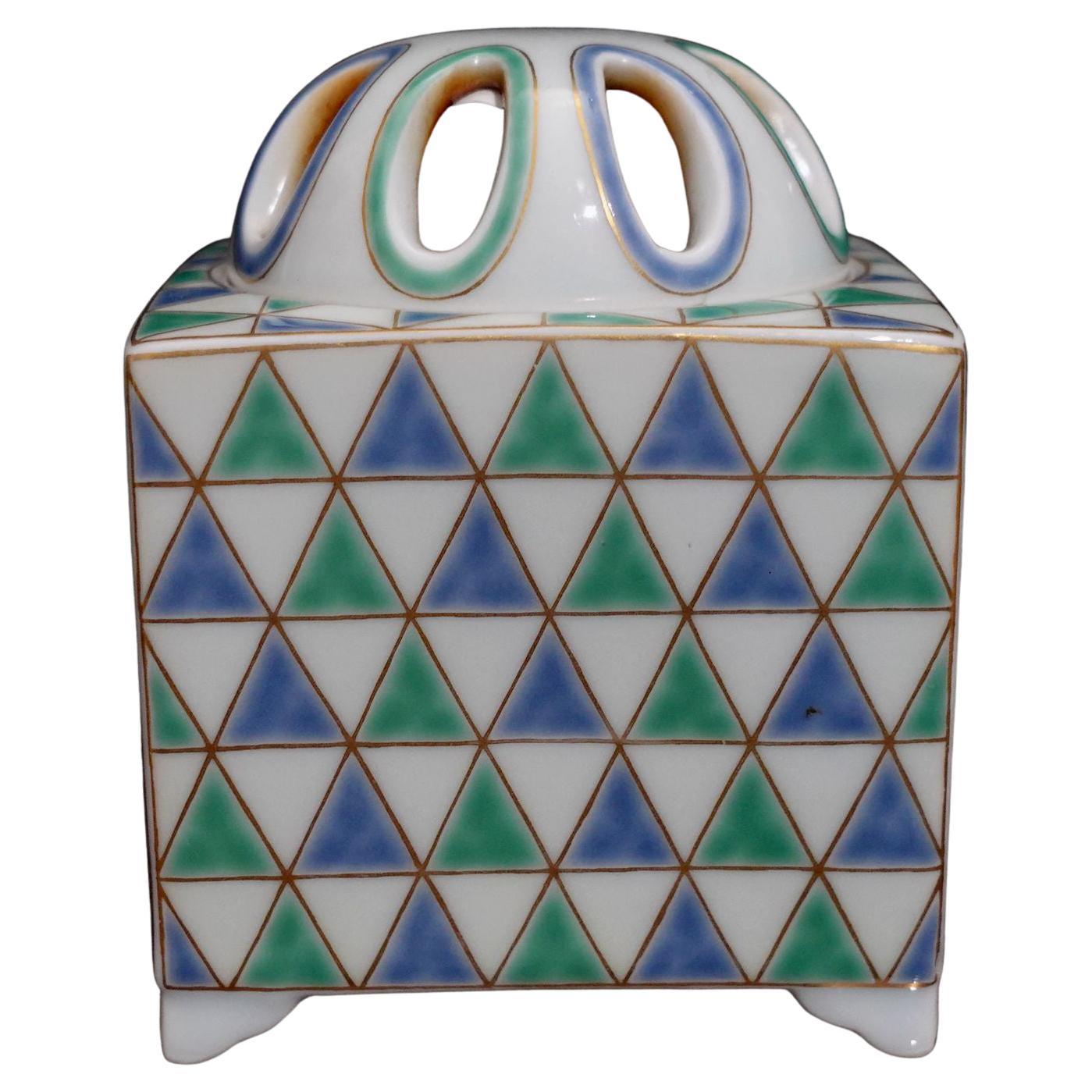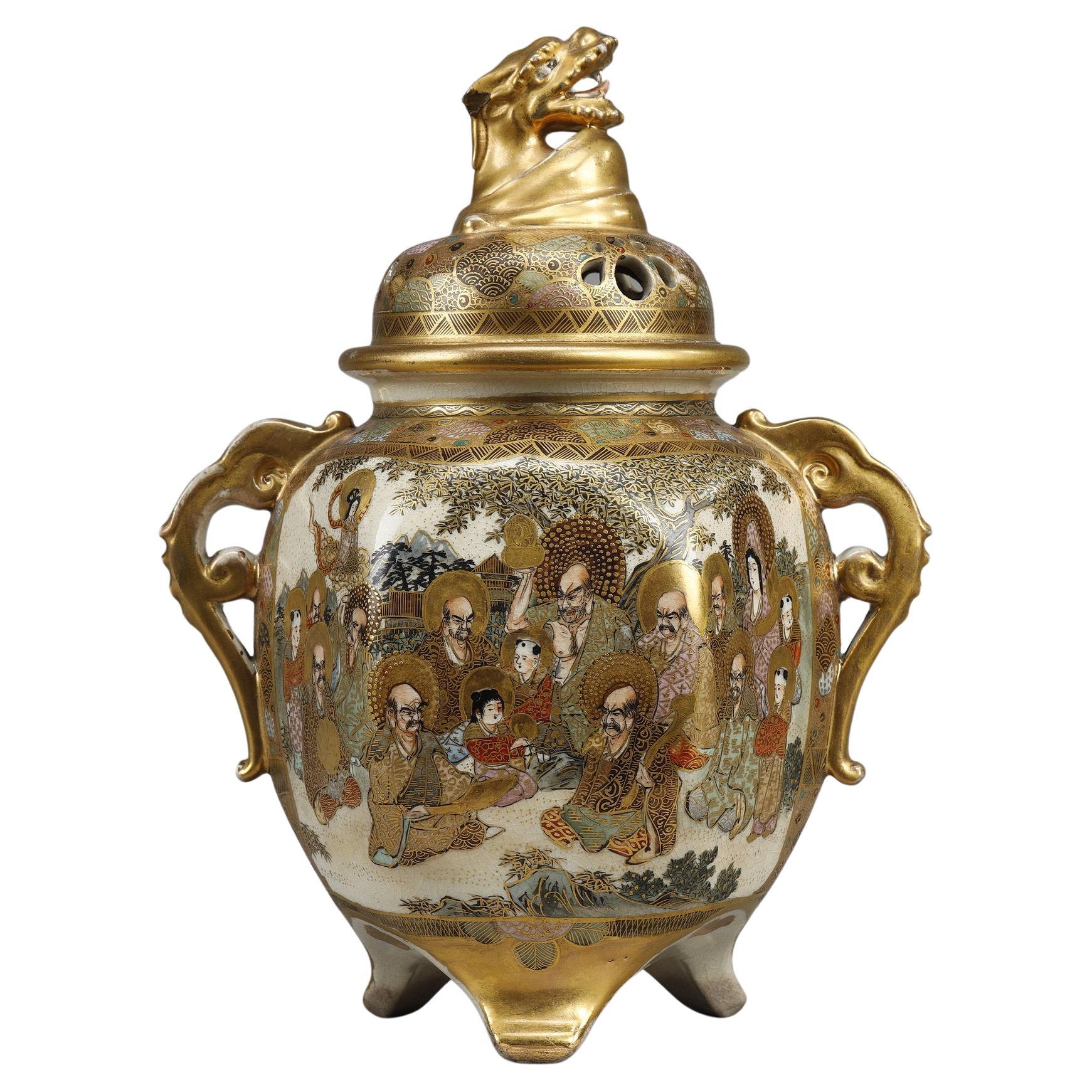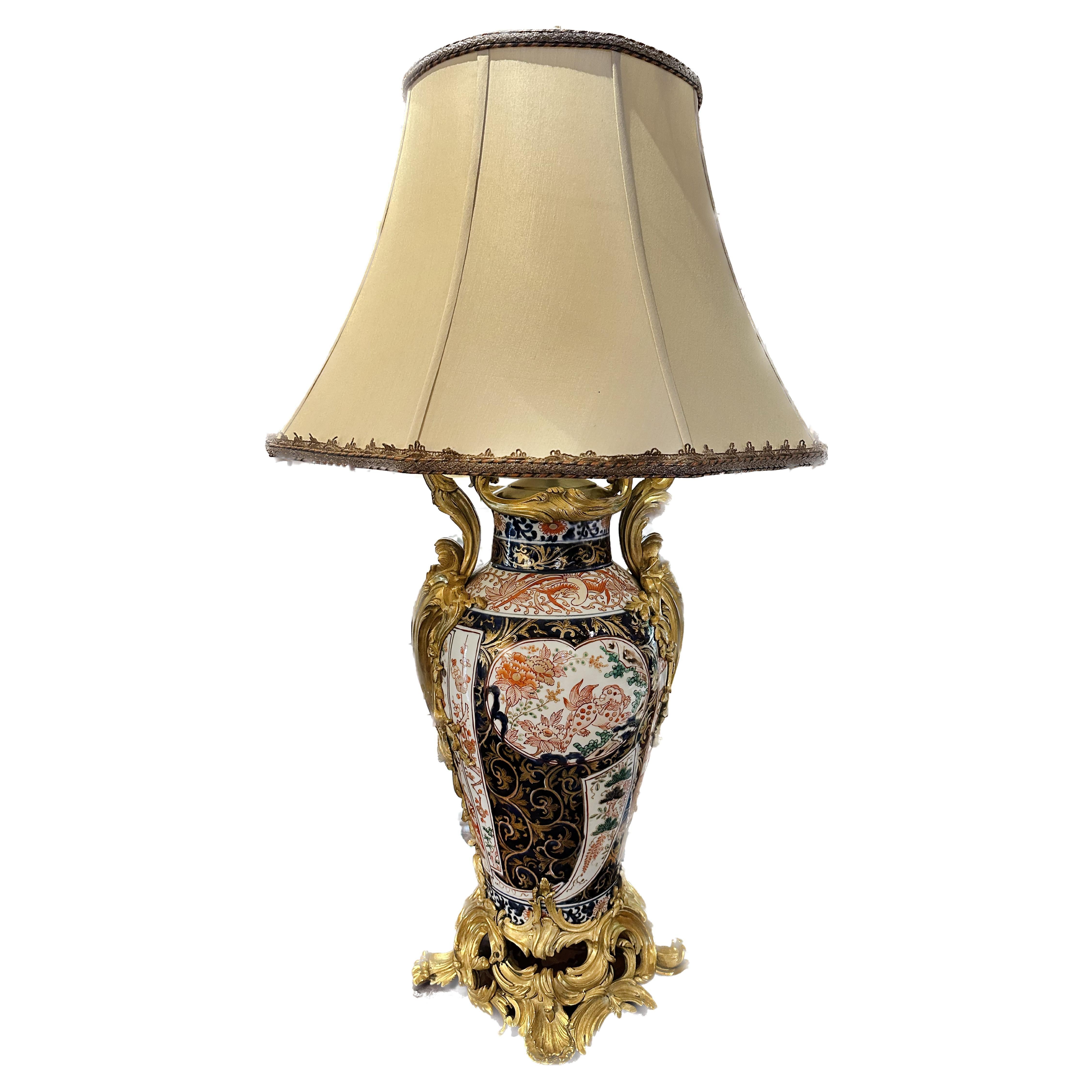Rare Meissen Marcolini Porcelain Chinoiserie Incense Burner Vase and Cover
About the Item
- Creator:Meissen Porcelain (Maker)
- Dimensions:Height: 10 in (25.4 cm)Width: 6 in (15.24 cm)Depth: 6 in (15.24 cm)
- Style:Chinoiserie (In the Style Of)
- Materials and Techniques:
- Place of Origin:
- Period:
- Date of Manufacture:circa 1800
- Condition:Wear consistent with age and use.
- Seller Location:New York, NY
- Reference Number:1stDibs: LU1798225096122
Meissen Porcelain
Meissen Porcelain (Staatliche Porzellan-Manufaktur Meissen) is one of the preeminent porcelain factories in Europe and was the first to produce true porcelain outside of Asia. It was established in 1710 under the auspices of King Augustus II “the Strong” of Saxony-Poland (1670–1733), a keen collector of Asian ceramics, particularly Ming porcelain.
In pursuing his passion, which he termed his “maladie de porcelaine,” Augustus spent vast sums, amassing some 20,000 pieces of Japanese and Chinese ceramics. These, along with examples of early Meissen, comprise the Porzellansammlung, or porcelain collection, of the Zwinger Palace, in Dresden.
The king was determined, however, to free the European market from its dependence on Asian imports and to give European artisans the freedom to create their own porcelain designs. To this end, he charged the scientist Ehrenfried Walther von Tschirnhaus and aspiring alchemist Johann Friedrich Böttger with the task of using local materials to produce true, hard-paste porcelain (as opposed to the soft-paste variety European ceramists in the Netherlands, Germany, France, Italy and Spain had been producing since the late Renaissance). In 1709, the pair succeeded in doing just that, employing kaolin, or “china clay.” A year later, the Meissen factory was born.
In its first decades, Meissen mostly looked to Asian models, producing wares based on Japanese Kakiemon ceramics and pieces with Chinese-inflected decorations called chinoiserie. During the 1720s its painters drew inspiration from the works of Watteau, and the scenes of courtly life, fruits and flowers that adorned fashionable textiles and wallpaper. It was in this period that Meissen introduced its famous cobalt-blue crossed swords logo — derived from the arms of the Elector of Saxony as Arch-Marshal of the Holy Roman Empire — to distinguish its products from those of competing factories that were beginning to spring up around Europe.
By the 1730s, Meissen’s modelers and decorators had mastered the style of Asian ceramics, and Augustus encouraged them to develop a new, original aesthetic. The factory’s director, Count Heinrich von Brühl, used Johann Wilhelm Weinmann’s botanical drawings as the basis for a new line of wares with European-style surface decoration. The Blue Onion pattern (Zwiebelmuster), first produced in 1739, melded Asian and European influences, closely following patterns used in Chinese underglaze-blue porcelain, but replacing exotic flora and fruits with Western varieties (likely peaches and pomegranates, not onions) along with peonies and asters.
During the same period, head modeler Joachim Kändler (1706–75) began crafting delicate porcelain figures derived from the Italian commedia dell’arte. Often used as centerpieces on banquet tables and decorated to reflect the latest fashions in courtly dress for men and women, these figurines were popular in their day, and are still considered among Meissen’s most iconic creations. Kändler also created the Swan Service, which, with its complex low-relief surface design and minimal decoration is considered a masterpiece of Baroque ceramics.
The rise of Neoclassicism in the latter half of the 18th century forced Meissen to change artistic direction and begin producing monumental vases, clocks, chandeliers and candelabra. In the 20th century, Meissen added to its 18th-century repertoire decidedly modern designs, including ones in the Art Nouveau style. The 1920s saw the introduction of numerous animal figures, such as the popular sea otter (Fischotter), which graced an East German postage stamp in the 1960s. Starting in 1933, artistic freedom was limited at the factory under the Nazi regime, and after World War II, when the region became part of East Germany, it struggled to reconcile its elite past with the values of the Communist government. In 1969, however, new artistic director Karl Petermann reintroduced the early designs and fostered a new degree of artistic license. Meissen became one of the few companies to prosper in East Germany.
Owned by the State of Saxony since reunification, in 1990, Meissen continues to produce its classic designs together with new ones developed collaboratively with artists from all over the world. In addition, through its artCAMPUS program, the factory has invited distinguished ceramic artists, such as Chris Antemann and Arlene Shechet, to work in its studios in collaboration with its skilled modelers and painters. The resulting works of contemporary sculpture are inspired by Meissen’s rich and complex legacy.
Find a collection of authentic Meissen Porcelain on 1stDibs.
- ShippingRetrieving quote...Ships From: New York, NY
- Return PolicyA return for this item may be initiated within 7 days of delivery.
- Monumental Chinese Famille Rose Porcelain "Peacock" Palace VaseLocated in New York, NYA monumental Chinese famille rose porcelain "Peacock" palace vase, Republic period. Magnificent quality and palace sized Chinese hu-form vase with side h...Category
Late 20th Century Chinese Qing Ceramics
MaterialsPorcelain
- A Massive Pair of Chinese Pink and White Dragon Porcelain Planters, RepublicLocated in New York, NYA Massive Pair of Chinese Pink and White Dragon Porcelain Planters, Republic Period. Elevate your living space with a touch of timeless elegan...Category
20th Century Chinese Ceramics
MaterialsPorcelain
- Monumental Royal Vienna Iridescent Porcelain Portrait Vase and Cover, WagnerBy Royal Vienna PorcelainLocated in New York, NYA monumental Royal Vienna Iridescent porcelain portrait vase and cover, Wagner, circa 1880. This Royal Vienna Urn features an exceptional iridescent ...Category
Antique 19th Century Austrian Napoleon III Vases
MaterialsPorcelain
- Palatial French Ormolu-Mounted Sevres Porcelain Hand-Painted Vase and CoverBy Manufacture Nationale de SèvresLocated in New York, NYA palatial french ormolu-mounted Sevres Porcelain hand-painted vase and cover, circa 1838. This monumental Sevres porcelain vase stands 56" high, and is beautifully hand-painted with classical scenes of lovers and cupids, in teal / turquoise blue ground porcelain. Made with very fine quality figural bronze handle, the vase turns to a full 360 degree angle and is mounted on a solid bronze base with fine detail. Painted with beautiful flowers throughout the entire vase, leading up to the cover, which is adorned with an acorn bronze...Category
Antique 19th Century French Napoleon III Vases
MaterialsBronze
- Monumental Pair of Chinese Sancai Glazed Pottery Figures of Guan Yin and LionLocated in New York, NYA Monumental pair of Chinese Sancai Glazed pottery figures / sculptures of Guan Yin and Lion on Wood Bases Chinese sancai glazed figures of Guan Yin and lion are a type of ceramic artwork that originated in China during the Tang dynasty (618-907 AD). "Sancai" means "three colors" in Chinese, and refers to the use of three distinct colors of glaze (usually green, yellow, and white) in the creation of these figures. Guan Yin is a Chinese bodhisattva associated with compassion and mercy, and is often depicted holding a vase of healing elixir or a willow branch. The lion, on the other hand, is a symbol of power and strength, and is often used as a guardian figure in Chinese mythology. The combination of Guan Yin and lion in a single artwork is significant, as it represents the union of mercy and power, a common theme in Buddhist and Taoist philosophy. Sancai glazed figures of Guan Yin and lion are highly valued by collectors and art enthusiasts due to their intricate design and rich history. They are often displayed in museums and galleries around the world, and are considered important cultural artifacts...Category
20th Century Chinese Ceramics
MaterialsPottery
- A Rare and Exquisite French Ormolu and Porcelain Clock, attributed to DeniereBy Maison DeniereLocated in New York, NYA Rare and Exquisite French Ormolu Bronze and Porcelain Clock, attributed to Jean Francois Deniere, circa 1810. This large and elaborate clock is made of the finest quality ormolu and porcelain during the period. Of rectangular form, with porcelain and bronze columns painted with flowers and griffins, this clock would make a statement in any room. To a clock collector, this clock is a true masterpiece! Similar clocks like this, by Deniere, are in prestigious museums and collections worldwide, including the Frick Collection and the Royal Collection Trust. 21.5" high x 12" wide x 6" deep **For a similar clock see Christies New York, 21 November 2008, Lot # 139, sold for $50,000. Very good condition with no damages. All original parts. Clock is not running. More photos available upon request. Jean-François Deninger, called Denière, was one of the most illustrious bronziers of the first half of the 19th century. Appointed Envoy in Constantinople around 1796, the bronzier Denière entered into partnership with François Mathelin in 1797. They founded a prosperous operation and their atelier had over 200 workers during the Empire period - a number that subsequently doubled during the reign of Louis-Philippe. Fournisseur to the duchesse de Berry and Louis-Philippe, Denière also worked for the duke of Hamilton, Ferdinand VII of Spain, William II of Hesse, William II of Holland, Tsar Alexander II of Russia, and other heads of state. In 1817-1818 Denière furnished some of the bronze work for the redecoration of the White House in Washington. He furthermore produced the mounts for the cradle of the duc de Bordeaux in 1820 and the bronzes for Charles X's coronation coach...Category
Antique Early 19th Century French Mantel Clocks
MaterialsBronze, Ormolu
- Rare Japanese Porcelain Incense Burner with Inlays Makuzu KozanBy Makuzu KozanLocated in Atlanta, GAA porcelain incense burner (koro) made by Japanese potter Makuzu Kozan (also known as Miyagawa Kozan, 1842-1916) circa 1890s-1900s (end of Meiji Period). The koro features an elegant...Category
Antique Late 19th Century Japanese Meiji Ceramics
MaterialsCeramic
- Antique Japanese Porcelain Brazier 'Incense Burner', SignedLocated in Norton, MAA very unusual Antique Japanese Porcelain Brazier (Incense Burner) with green checker pattern, Signed on the bottom.Category
Early 20th Century Japanese Ceramics
MaterialsPorcelain
- Satsuma porcelain covered perfume burnerLocated in Paris, FRSatsuma earthenware tripod perfume burner with polychrome and gold enamel decoration. The body is decorated on one side with richly dressed figures representing masters instructing t...Category
Antique 1890s Japanese Ceramics
MaterialsPorcelain
- 1960's Chinoiserie Porcelain Square VaseLocated in Charlotte, NCAn Asian Chinoiserie style table vase, unbranded. Hand painted porcelain with a Chinoiserie design of foliate, floral & geometric shapes in shades of white, red & salmon colors with gold trim, and a tapered square urn...Category
Mid-20th Century Asian Chinoiserie Ceramics
MaterialsPorcelain, Paint
- Chinoiserie Ceramic Famille Rose Oval Platter in Pink and Gold Floral MotifLocated in Oklahoma City, OKA gorgeous oval Famille rose chinoiserie platter. This beautiful ceramic piece is oval in form, and features a hand painted floral motif desig...Category
Early 20th Century Chinese Chinoiserie Ceramics
MaterialsCeramic, Paint
- Continental Porcelain Meissen UrnBy Meissen PorcelainLocated in Dallas, TXA continental porcelain Imari style urn. repurposed as an Arita-yaki lamp. The center is a wide oval shape. The sides, top, and bottom are ornate with Ormolu detail in lush organic f...Category
Antique Late 19th Century Ceramics
MaterialsPorcelain






